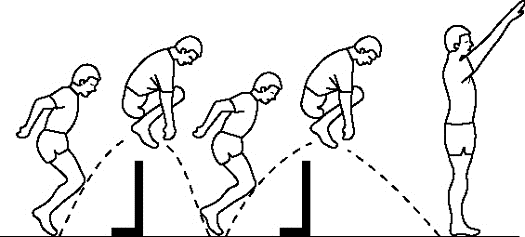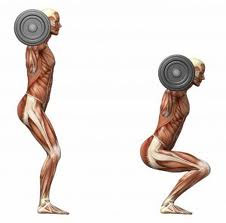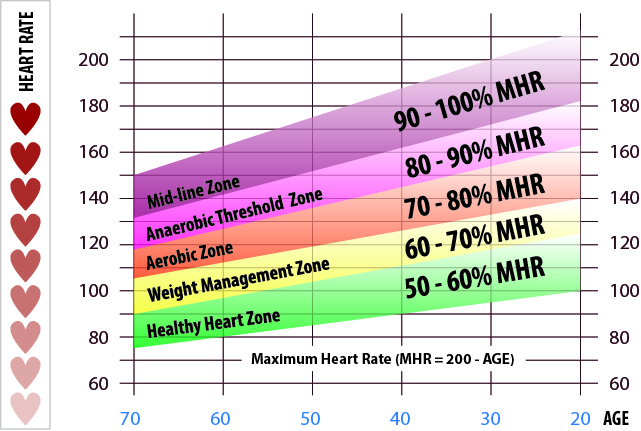Content
- Application of the principles of training
- Specific examples of how to apply the principles of specificity, progression and overload.
When developing your sporting performance, training is inevitably a key consideration if progress is to be made. Training can be beneficial to you, whether it is burning calories when trying to lose body fat or trying to increase speed for your particular sport. However, in order to make steady continual training improvements the Principles of training are essential if progress is to be made. In order to make training gains, the 3 principles of training that are of most importance are specificity, progression and overload.
With any sportsperson, before any form of training is undertaken there must be clear understanding of the specific components of fitness and the specific skills requirements that are essential in that particular sport. For example, a shot putter will require a great deal of strength, power and a reasonable degree of flexibility but will also spend a great deal of time on the technique for the putting action. Games players’ main components of fitness can vary between positions, but generally they train many components of fitness and have a wider variety of skills to develop. Hence knowledge and understanding of specific components of fitness required in your sport is vital, as is knowledge of the specific methods of training that is best suited to your sport or activity.
Training the components of fitness means working the aerobic or anaerobic energy systems or, in the case of flexibility, developing the range of movement around a particular joint. Training can almost be split into high-intensity near maximum-effort training, seeking to develop components of fitness such as speed, strength, power, agility, and reaction time. Coaches, often in team games, also need to develop speed endurance and muscular endurance. In such situations the intensity of the exercise is high but the recovery between the bouts of exercise is short, not allowing for full recovery of the energy systems. Finally, there is the aerobic type training, which is of a lower intensity, exercising below the athlete’s anaerobic threshold.
The following examples highlight this point.
A netball player has just carried out fitness tests on speed, agility, cardiovascular fitness, flexibility and leg power. She has discovered that her leg power through carrying out the vertical jump is below the team average. She now needs to specifically develop this component of fitness.
How is specificity applied – Power is a combination of both strength and speed, so the netballer has a number of training options available to her. A highly specific method of training that would help develop leg power would be plyometrics because of the amount of jumping that is involved in netball. Specific plyometric stations would involve equipment such as hurdles, benches, boxes and box tops. Specific training would involve bounding and hopping over the equipment or jumping off boxes and bounding over a hurdle (depth jumps). While an understanding of the method of training is important, it is also vital to understand the length of time the performer carries out a particular exercise and the length of recovery time required before the next exercise.
For example, have a line of 5 hurdles, 1m in height. The performer bounds over the line of hurdles and walks back around allowing 30 seconds of recovery before repeating. This is done a further 3 times completing 1 set. 4 minutes of recovery would then be completed before beginning a second set of 5 reps. 4 sets would be completed in total for this exercise.
| Activity | Sets | Repetitions | Recovery between repetitions | Recovery time between sets |
|---|---|---|---|---|
| 1m Hurdle bounds | 4 | 5 | 30 seconds | 4 mins |

Specificity explained – As with speed and strength, power is a maximal activity. In order to train at or near to maximum effort, exercise duration must be less than 10 seconds (approximately the amount of time creatine phosphate system (CP) can work for) but carried out at or near 100% effort. Also plenty of recovery time between bursts of exercise must be allowed for CP resynthesis. The duration of the bounding over the five hurdles is relatively short (4-5 seconds) but is carried out with maximum effort hence the predominant energy system being used is the (CP) system. With the exercise lasting only 4-5 seconds, not all the CP will be used. By allowing 30 seconds of recovery between each rep, almost all the CP is restored (remember, 30 seconds restores almost 50% of CP). This means the performer can give almost 100% effort on the next rep. The 4-minute recovery between each set then allows further time for the CP to recover ready for the next set.
Point to remember – Whenever you specifically train maximum strength, speed and power, the length of the specific exercise should not exceed 10 seconds. For example, during weight training for strength, the weight must be above 80% of your 1 rep max (only above 80% of 1 rep max will you use your fast-twitch fibres necessary for strength development). Also the set shouldn’t last longer than 10 seconds (generally no more than 6 reps). Any longer than this and your muscle will begin to use muscle glycogen as the main fuel source because the CP stores will have run out. Muscular endurance rather than strength would then begin to become the component of fitness developed.
Recovery between sets is also vital, 3-4 minutes allow between 95-98% of CP to be replenished, allowing the performer to give maximum effort for the next set. The same principles apply for speed training as well.
Progression and overload are inextricably linked, because in reality you must progress in order to overload, and vice versa. In order to overload, the 3 ways that are taught during GCSE lessons are frequency, intensity and time (F.I.T.). This remains the case at AS level, but as with specificity of training, greater knowledge and understanding regarding progression and overload of each method of training is required.
A rugby player wants to develop their leg strength during pre-season training. One of the exercises they carry out is half squats.

Half squat (balanced-life-fitness.com)
The player does the following sets of squats
| Exercise | Weight | Sets | Reps | Recovery (mins) |
|---|---|---|---|---|
| Half squat | 140kg (90% od 1 rep max) | 4 | 4 | 4 |
In order to overload for the next session, the player would carry out the following progression to the session:
| Exercise | Weight | Sets | Reps | Recovery (mins) |
|---|---|---|---|---|
| Half squat | 145kg (90% od 1 rep max) | 4 | 4 | 4 |
The athlete is increasing the intensity of the session by increasing the weight by 5kg. This would be the most appropriate and effective way of developing strength.
If the athlete were to reduce the recovery time to 1 minute as a means of overloading, then there would be insufficient time for CP resynthesis. This would result in increased fatigue and incompletion of the next set. Similarly, if the number of repetitions were increased rather than the weight, then as the player improved over time and the repetitions increased to 8, then 10 etc., the component of fitness being developed would be muscular endurance rather than strength.
The player could also overload by increasing the frequency of training from 3 times a week to 4. But it is also important not to stress the same muscle groups by doing the same exercises on two consecutive days. Doing so would not allow sufficient recovery time for growth and repair of the muscle fibres.
If a coach or athlete is training to specifically develop speed endurance, lactic tolerance or muscular endurance for a 200m swimmer, interval training is often used. Reducing recovery time between sets and repetitions would be an effective method of achieving overload. Overload could be achieved by slightly increasing the distance swam for each repetition. The result of such training would be greater amounts of lactic acid entering the muscle, which over time would increase lactic tolerance levels.
When training the aerobic system, applying the principles of training is also important in developing performance. A very basic method of increasing overload is by gradually increasing the distance that the athlete covers (equivalent to time) whether it is running, swimming, cycling or any other endurance type activity. However, merely increasing the distance covered does not provide sufficient detail as to how overload is being achieved. It is also vital that an athlete has knowledge and understanding of intensity of exercise and the subsequent heart-rate training zones.

mizfitonline.com
As with 1 rep maximum in weight training, endurance athletes must have knowledge of their maximum heart rate in order to train at the correct intensity (a poor estimation is 220 - age). The only way to accurately determine maximum heart rate is to perform a short, maximal stress test (to exhaustion). During the test, heart rate will rise steadily until a plateau is reached, despite the exercise intensity continuing to rise (assuming the individual is fit enough to last until such a time). This is a direct marker that the heart is beating as fast as possible.
For example, if an athlete wants to stress the aerobic system and work just under their anaerobic threshold, then they would wear a heart-rate monitor and work at approximately 80-85% of their maximum heart rate. Another problem is that, even if maximum heart rate is measured accurately, prescribing exercise using standardised zones seen in the diagram makes no allowances for individual differences. Only through laboratory testing of an athlete can specific training zones and thresholds be determined.
Point to remember – The anaerobic threshold is the point at which the body begins to use more anaerobic rather than aerobic energy to sustain exercise intensity. If the intensity of exercise continues to rise, then the body will fatigue quickly because all anaerobic energy stores will become depleted. This means there will be a significant drop in performance or slowing down, which allows the aerobic system to supply the necessary energy and begin to repay the oxygen debt (link to oxygen debt in recovery). Training very close to the anaerobic threshold will result in an increase in your anaerobic threshold, thus improving aerobic fitness.
The majority of candidates lose marks when answering questions on the principles of training because not enough specific information or detail is provided. A common answer often states that ‘to overload in weight training you should increase the intensity of exercise’. While this statement is true, it does not provide sufficient information to warrant marks at AS. If the answer stated ‘ you could increase the intensity of weight training by increasing the weight from 50kg to 55kg for bench press’, then a mark would now be given. Also the amount of recovery time between sets or bouts of work is often misunderstood. For example, if a maximal effort is required within the training, then a long recovery is needed in order to replenish the PC stores (4 mins allows 95-98% recovery of CP stores). For lower intensity, endurance type training, shorter recovery times between bouts of exercise are generally used.
Any good training programme must apply the principles of training. All programmes must have
Therefore, in order for continued individual improvements in performance to be made, there is a need for a variation of training intensity and volume (amount of sets, reps etc.) This is particularly the case within prolonged periods of training where continual progression in performance is sought. Therefore, training has to be carefully structured and periodised for progression to be made after the initial adaptations to training have taken place. The reason for this is that the neuromuscular system learns what we are doing and can often get used to the training we do, this results in limited progress and what is known as a plateau. If we fail to change and periodised our training, once the initial adaptation has taken place, then progression will halt or may even reverse.